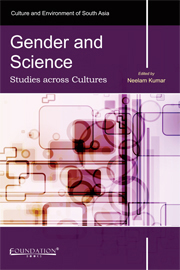Book contents
- Frontmatter
- Contents
- List of Contributors
- Acknowledgements
- Introduction: Reflections and Realities across Cultures
- Section I Approaches and Perspectives
- Section II Illustrative Examples
- 6 Women and Science in the Netherlands: A Dutch Case
- 7 Japanese Women Scientists: Trends and Strategies
- 8 Saudi Women: Their Role in Science and Education
- 9 Changing the Facts: Gender Dimensions of the South African Public Science System
- 10 Demographic Inertia and the Glass Ceiling in American Science (1979–2000)
- 11 Women in Science in France
- 12 Women and Science: Issues and Perspectives in the Indian Context
- Conclusion: The Persistent Patterns!
- Bibliography
- Index
6 - Women and Science in the Netherlands: A Dutch Case
from Section II - Illustrative Examples
Published online by Cambridge University Press: 05 May 2013
- Frontmatter
- Contents
- List of Contributors
- Acknowledgements
- Introduction: Reflections and Realities across Cultures
- Section I Approaches and Perspectives
- Section II Illustrative Examples
- 6 Women and Science in the Netherlands: A Dutch Case
- 7 Japanese Women Scientists: Trends and Strategies
- 8 Saudi Women: Their Role in Science and Education
- 9 Changing the Facts: Gender Dimensions of the South African Public Science System
- 10 Demographic Inertia and the Glass Ceiling in American Science (1979–2000)
- 11 Women in Science in France
- 12 Women and Science: Issues and Perspectives in the Indian Context
- Conclusion: The Persistent Patterns!
- Bibliography
- Index
Summary
… even in the long-industrialized European countries, the story has not been one of automatic growth and progress. Thus … in the Netherlands … there too the situation for women academics has deteriorated over the past two decades. Where in 1970 there were 2.7 per cent women professors, by 1980 this was down to 2.2 per cent and by 1988 to 2.1 per cent.
(Rose 1994, p. 103)In April 2000, the European Commission (EC) organised a conference in Brussels, titled ‘Making Change Happen’. The aim was to discuss the EC's report titled Science Policies in the European Union – Promoting Excellence through Mainstreaming Gender Equality (EC, 2000) and to determine the follow-up strategies for the report's findings. With regard to the Netherlands, the report made it clear that in terms of a European (and global) comparative perspective, Dutch women in the field of science were not faring well. Although the report presented some good news about practices in the Netherlands, this was overshadowed by statistical negatives – one table in the European Commission report showed that the Netherlands came in last out of 24 nations with the lowest percentages of women in the rank of professor. Another table confirmed that the Netherlands had ‘the leakiest pipeline’ of all (EC, 2000, Table 2.1, p. 10 and Table 2.4 (the scissors diagram), p. 13; for the ‘leaky pipeline’, see p. 12).
- Type
- Chapter
- Information
- Gender and ScienceStudies across Cultures, pp. 95 - 149Publisher: Foundation BooksPrint publication year: 2012

